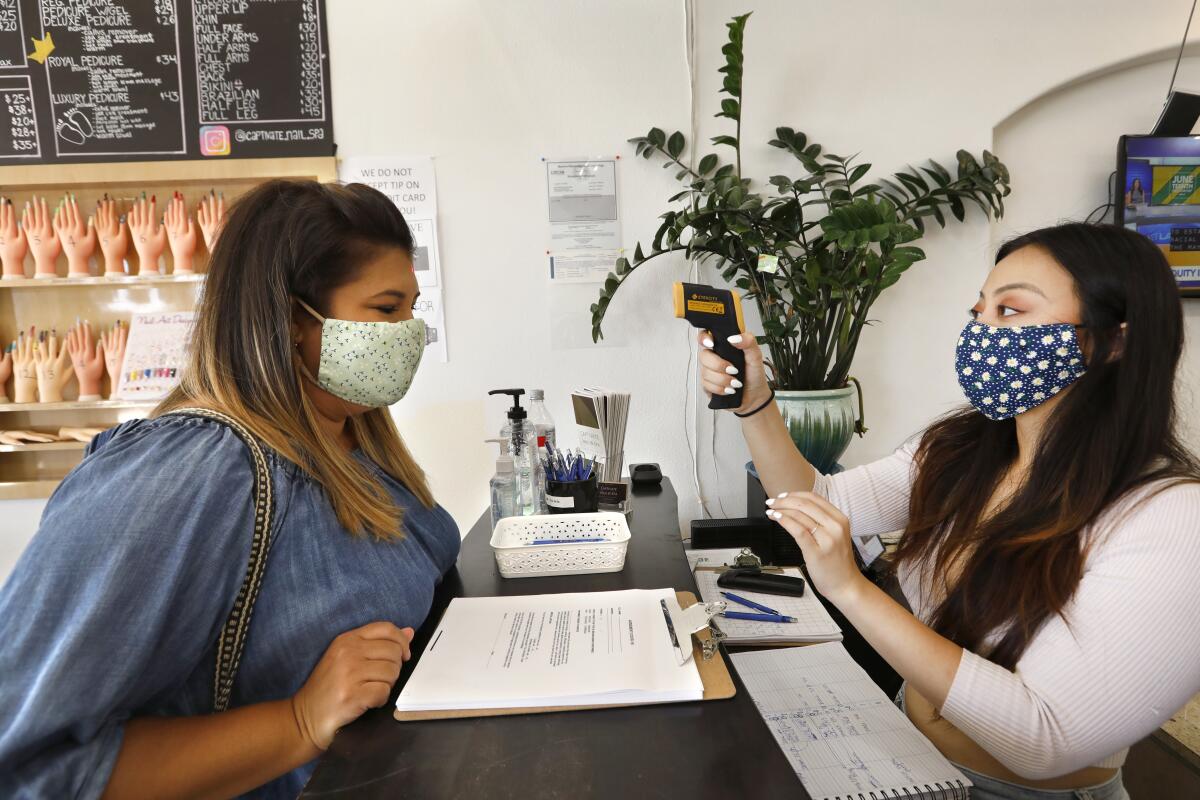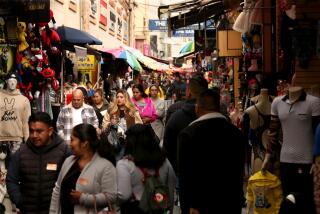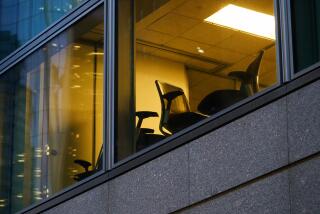As the wealthy retrench amid the coronavirus crisis, low-wage workers take the hit

- Share via
WASHINGTON — Except for a period during the Vietnam War in the 1970s and when she first settled in California a decade later, manicurist Liz Le had never experienced a long stretch of unemployment.
For 25 years she has worked at the same nail salon on Bedford Drive in Beverly Hills. It’s where her hard life — raising three daughters as a single mother with a low-wage job after losing her husband in Vietnam — intersected with the smooth hands of her more fortunate clients.
Today, however, as COVID-19 rampages through California, Le has not heard from many of her regular clients in nearly four months. And even though the salon is now open again, she fears it may be a long time before customers fully return.
“Now people are scared, they don’t want to come,” said Le, 69. And not just clients, Le herself: “Oh, my God! Like a war. But it’s more scary.”
Upper-income households pulled back sharply on spending when the pandemic first hit, and they have been slow to ramp back up, new research shows. Much of the cutback has come in payments for personal and other discretionary purchases.
That in turn threatens deep and long-term damage to the overall economy and to a large population of low-wage workers and families, like Le, who were barely getting by when the pandemic struck.
If the future turns out to be bleak for lower-income workers, at least some of the pain is likely to spread to those who are better off.
“If the incomes of a part of the economy are highly compromised, then those people will end up spending less and that gets spread across the entire economy,” said Steven Fazzari, an economics professor at Washington University in St. Louis. “I think we all have skin in the game.”
It may come as a surprise to many, but manicurists such as Le, along with barbers and massage therapists, were employed in some of the fastest growing occupations in the United States over the last decade.
That’s partly because as better-educated Americans became more affluent, they faced time and other pressures from demanding, if good-paying, jobs. In response, they turned more and more to the services of workers such as Le.
That’s what makes the financial impact of the COVID-19 pandemic different from past economic slumps — and potentially a tougher and more long-lasting hit for millions of Americans.
Previous downturns usually began by slamming manufacturing, construction or finance and then spilling over to the rest of the economy. Those industries, centered as they are on big corporations and financial interests with significant political clout, could count on large-scale help in recovering.
Even during the slow climb back from the Great Recession, people still boarded planes, ate out and pampered themselves with health and wellness programs, providing a kind of buffer for the economy.
This time, it was the less organized and less politically connected workers in service sectors who were hit first and hardest. And the blow came just as hourly wages were starting to move up, giving many lower-earning workers some real financial gains.
For these workers, including millions in previously booming restaurants, hotels, airline and entertainment venues, jobs vanished practically overnight. Many have managed to get by so far because of an extra helping of weekly unemployment benefits during the crisis. But that government help is set to expire at the end of July and their spending could soon tank, many economists fear.
Even if the economy moves back to normal and avoids further COVID outbreaks of the kind now sweeping Texas, Florida and Arizona, spending on services may remain low for months or even years to come.
The country has lost a net 20 million payroll jobs since COVID-19 burst out in the U.S. in March. Those losses wiped out nearly all the gains made over the decade since the Great Recession. About half of the layoffs have been in lower-wage, personal-service jobs.
Amid the halting efforts to reopen businesses across the country, these same businesses, where social distancing is harder to do, have been especially slow to come back. Well-off households are likely to hold back spending until there’s a vaccine. Even then, there’s good reason to think the recovery will be long and slow.
Many restaurants, retail stores and other personal service businesses — fitness centers, dry cleaners and the like — took root in city cores and other areas with large concentrations of office workers. Now, many of those office workers are working from home. If large numbers continue to do so after the health crisis passes, demand for supporting service jobs will undoubtedly be smaller.
Hiring so far has been slower to return in occupations directly affected by the coronavirus. Through mid-June, job postings in hospitality and tourism, arts and entertainment, and child care are down by a half or more versus last year, according to the job listing site Indeed.
Strikingly, the job rebounds have been slowest to occur in places with larger shares of people working at home, such as San Francisco, Seattle, Boston and Washington, D.C.
“This is consistent with recent evidence that richer people’s spending has dropped more, hurting businesses more in richer neighborhoods than in poorer neighborhoods,” said Jed Kolko, Indeed’s chief economist, who’s based in San Francisco.
Kolko worries about what this trend portends:
“In high work-from-home metros, job postings in well-paying sectors like finance and tech have fallen less than the national average, while job postings in worse-paying retail and service sectors have fallen more than the national average,” he wrote.
“That means that, in these metros, opportunities may be drying up more for people who were already struggling.”
This suggests not only that the recovery will probably be slow, but that it could also aggravate existing inequalities in large metro areas as lower-income households, many of them minorities, fall further behind.
But all but the very wealthiest also will feel the pain in today’s highly interconnected economy.
What may look like disconnected parts of the economy actually have extensive links, said Daniel Mitchell, a UCLA economist.
Mitchell noted that he lives in Santa Monica, for example. “We’re an affluent little city taken by itself, but it’s not somehow walled off from what goes on in the rest of Los Angeles. That’s going to be true everywhere.”
For most of the last decade, Deirdre Reilly, 52, made her livelihood by walking dogs and working at a dog-care center in Rockville, Md., a suburb of Washington.
“I’m one of those people who finds dogs on the streets and take them home,” she said.
In 2006, when she left Los Angeles to return to her native Maryland, she drove across the country with seven cats and two dogs. “It makes me happy to be around the animals.”
Since the pandemic, Reilly has gotten only a fraction of her usual work hours at the dog-care facility. While many people seemed to be looking for puppies to keep them company during months of stay-at-home orders, she said, hardly anyone was bringing in dogs for day care or boarding them at night.
Some dog owners said they could walk their own pets because they were now working at home. Others don’t want to risk getting infected.
In recent days, Reilly said she’s recovered most of her 30-plus hours a week, but business remains sharply lower, and she has fewer co-workers. In her happiest moments when she was working for herself, Reilly took care of cats and made as many as 13 dog walks a day.
“It was pretty cool. I made most of my money when people went out of town.”
Now, no one seems to be leaving home for long, if at all.
“I feel uncertain,” she said of her line of work. “I don’t have confidence at this point. Let’s see what happens next.”
More to Read
Get the L.A. Times Politics newsletter
Deeply reported insights into legislation, politics and policy from Sacramento, Washington and beyond. In your inbox three times per week.
You may occasionally receive promotional content from the Los Angeles Times.











